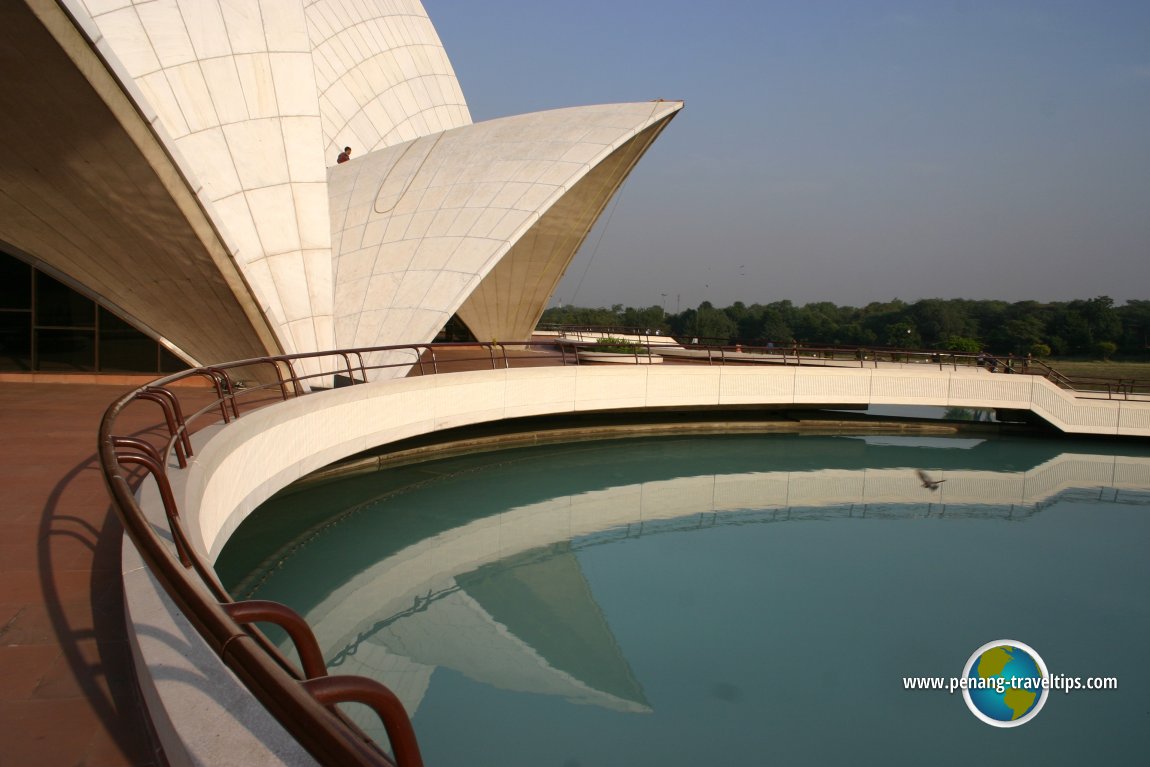 Bahai Lotus Temple (10 November, 2004)
Bahai Lotus Temple (10 November, 2004)
The Lotus Temple of the Bahai (GPS: 28.55248, 77.25869) faith is located in the neighbourhood of Kalkaji in south New Delhi. It is one of the city's major architectural marvels. Reminiscent of the Sydney Opera House, the temple takes the shape of a half-opened Lotus flower. The lotus flower signifies purity and peace, a representation of the Manifestation of God, to the people of India. Rising pure above stagnant, muddy waters, the lotus flower is worthy of emulation, teaching people to be detached from material preoccupations.
This ancient symbol has been given a modern and contemporary form in the structure of the Bahai House of Worship drawing into its sanctum sanctorum people from all races, religious backgrounds and culture from around the globe. It represents the Bahai faith, - an independent world religion; divine in origin, all embracing in scope, broad in its outlook, scientific in its method, humanitarian in its principles, and dynamic in the influence.
 Bahai Lotus Temple (10 November, 2004)
Bahai Lotus Temple (10 November, 2004)
The temple itself is made of marble, cement, dolomite and sand. It is visible from several spots in south Delhi. To build this temple, traditional Indian means of construction were combined with the most modern Western engineering design. The architect is Fariborz Sahba, a Canadian architect of Iranian origin, who spent 10 years in designing and managing the project with the help of a team of about 800 engineers, technicians, artisans and workers brought to realise this very complicated constructions project.
The Lotus Temple of Delhi joins six other Bahai temples around the world. Each shares some basic design concepts, has its own distinct cultural identity embodying the principle of unity in diversity. The temple is composed of three ranks of nine petals. Each emerges from a podium elevating the building above the surroundings. The first two ranks curve inward, embracing the inner dome; the third layer curves outward to form canopies over the nine entrances. The petals are constructed of reinforced white concrete cast in place and clad in white marble panels. They form patterns related to the geometry.
Nine arches that provide the main support for the superstructure ring the central hall. Outside, nine reflecting pools surround the building. Their form suggests the green leaves of the lotus flower. There are virtually no straight lines on this building, so erecting it posed extraordinary challenges.
The difficult to accurately produce the complex double-curved surfaces and their intersections is compounded by the closeness of the petals that severely restricted workspace. Nevertheless the task was achieved using only local labourers. The architect believes that this design could not have been executed anywhere else because it is rare to find the combination of traditional craftsmanship, pride in one's work, empathy for spiritual undertaking, perseverance under all odds and ample patience, as can be found in the Indian subcontinent.
 Bahai Lotus Temple (10 November, 2004)
Bahai Lotus Temple (10 November, 2004)
 Bahai Lotus Temple (10 November, 2004)
Bahai Lotus Temple (10 November, 2004)
 Bahai Lotus Temple (10 November, 2004)
Bahai Lotus Temple (10 November, 2004)
 Bahai Lotus Temple (10 November, 2004)
Bahai Lotus Temple (10 November, 2004)
 Members of AsiaExplorers at Bahai Lotus Temple (10 November, 2004)
Members of AsiaExplorers at Bahai Lotus Temple (10 November, 2004)
The Bahai Lotus Temple is  on the Map of New Delhi, India
on the Map of New Delhi, India
List of Historic Buildings in India; back to New Delhi, India
 Latest updates on Penang Travel Tips
Latest updates on Penang Travel Tips

Copyright © 2003-2025 Timothy Tye. All Rights Reserved.

 Go Back
Go Back